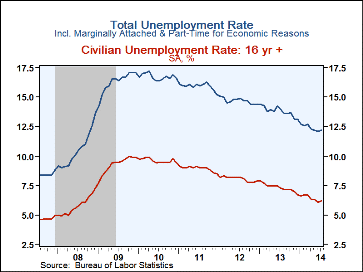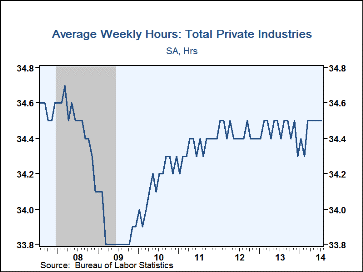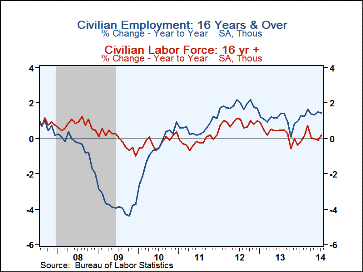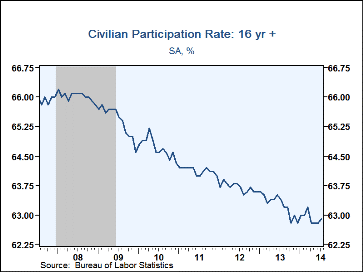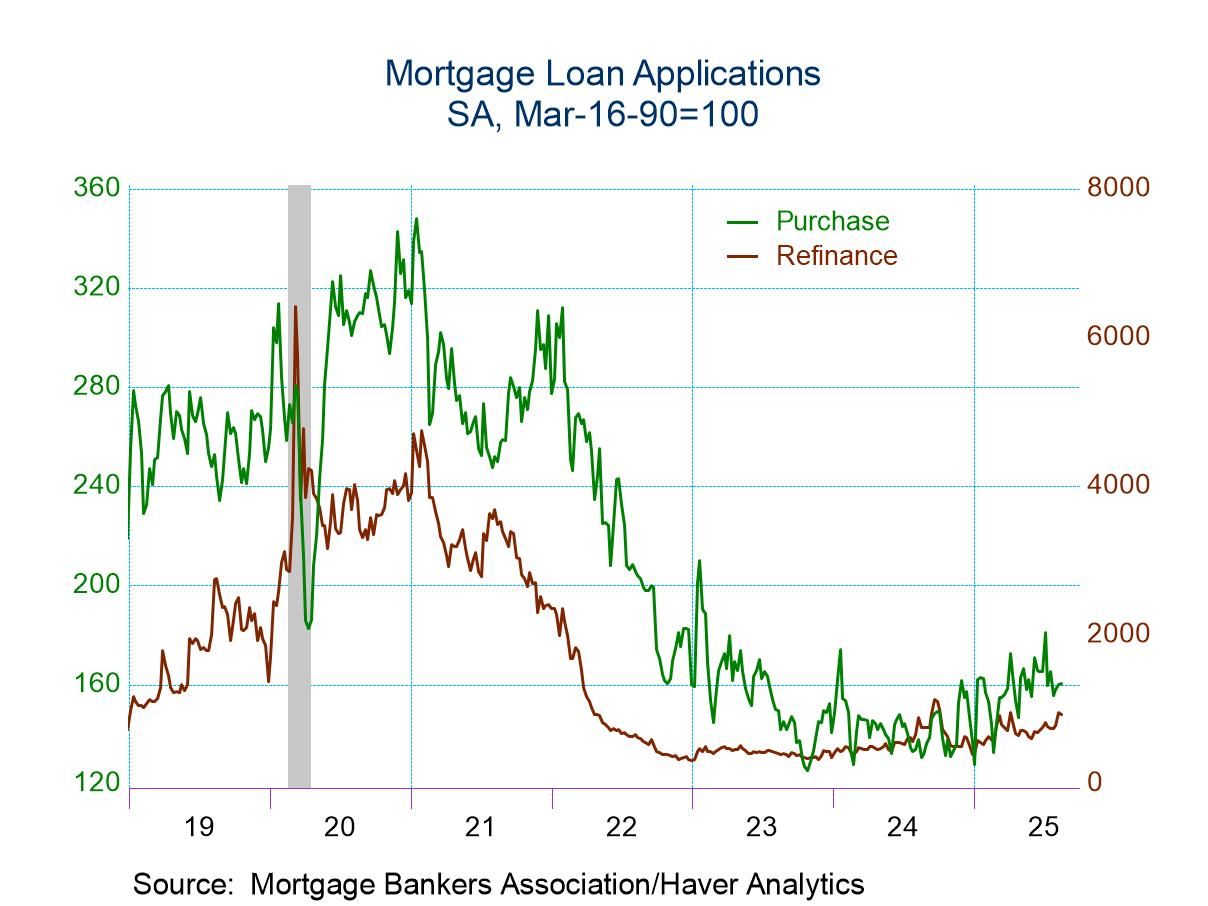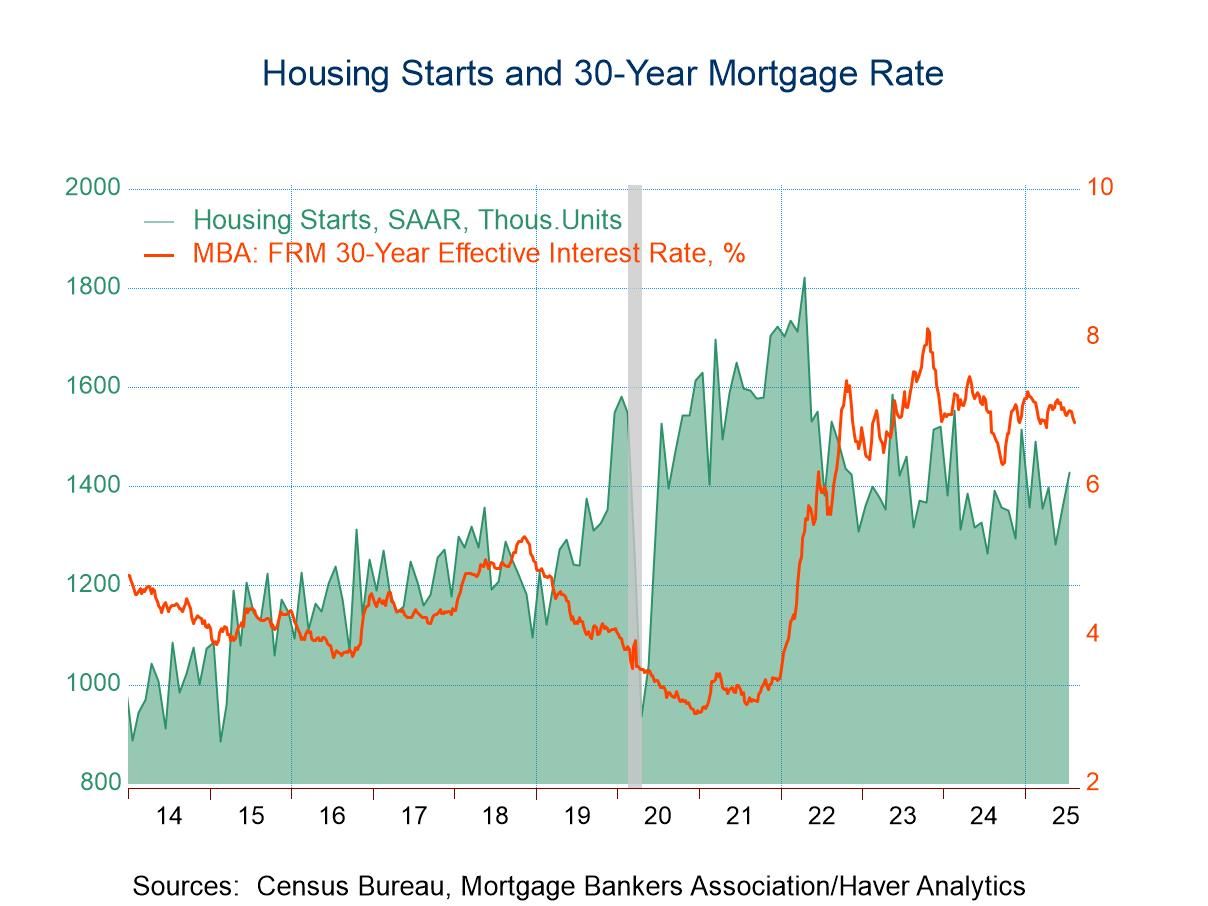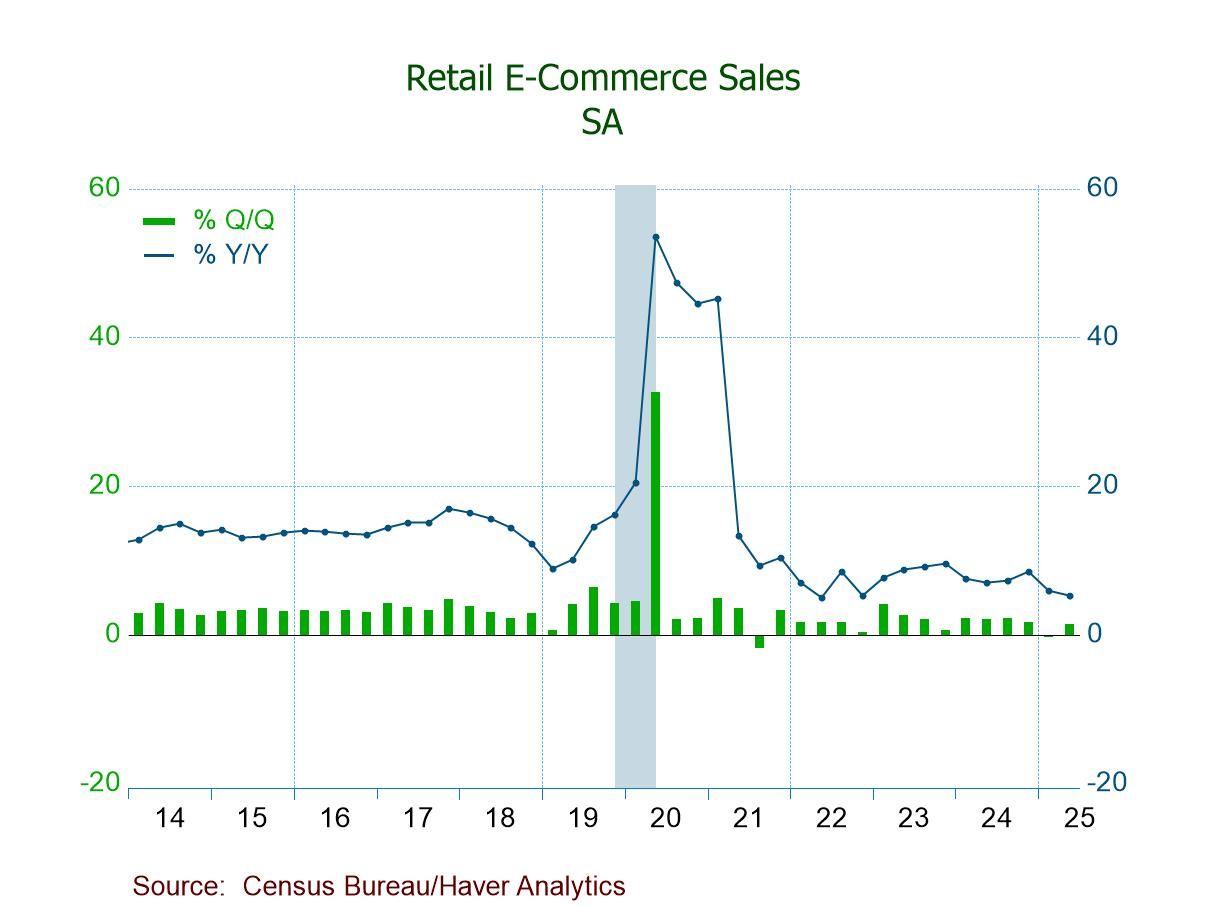 Global| Aug 01 2014
Global| Aug 01 2014U.S. Payrolls Rise 209,000; Jobless Rate Backs Up
by:Tom Moeller
|in:Economy in Brief
Summary
The rate of job market improvement toned down a bit last month. Nonfarm payrolls increased 209,000 during July following upwardly-revised gains of 298,000 and 229,000 during the prior two months. The increase fell short of [...]
The rate of job market improvement toned down a bit last month. Nonfarm payrolls increased 209,000 during July following upwardly-revised gains of 298,000 and 229,000 during the prior two months. The increase fell short of expectations for a 230,000 rise in the Action Economics Forecast Survey. The unemployment rate notched higher to 6.2% versus an expected 6.1%. The overall unemployment rate, including marginally attached workers and those employed part-time for economic reasons, rose to 12.2% from 12.1%.
From the payroll survey, jobs increased 209,000 following upwardly revised gains of 298,000 and 229,000 in June and May. The three-month average rise in nonfarm payrolls of 245,000 was below its recent peak of 277,000 logged last month. Factory sector payrolls increased 28,000 lifting the average three-month rise to 22,000, the firmest increase since May 2012. Construction jobs grew an improved 22,000. The three-month increase, however, slowed to 14,000, half the 29,000 averaged this winter. Private service producing employment growth also eased to 140,000, the weakest gain since January. It lessened the three-month rise to 191,000 which roughly matched the low in April. Most industry groupings saw slower job growth. Professional & business services jobs grew 47,000 (3.5% y/y) compared to a 59,000 three-month gain. Trade, transportation & utilities jobs advanced 39,000 (2.2% y/y) versus a three-month average of 48,000. Jobs in retail trade rose 26,700 (2.0% y/y) compared to a three month average of 26,600. Leisure & hospitality employment improved 21,000 (2.6% y/y) versus a three-month average of 30,000. In the education sector, employment rose 17,000 (1.8% y/y) which was less-than half the average three-month rise. Financial activities jobs gained 7,000 (0.6% y/y) compared to a three-month average of 11,000. In the public sector, jobs grew 11,000 (0.4% y/y) and the average three-month rise was 13,000. The slowdown in job creation at the local government level was minimal. Jobs rose 12,000 (0.7% y/y) compared to a 13,000 three-month average. Federal government jobs were unchanged (-1.5% y/y) versus no change averaged during the last three months. State government jobs slipped 1,000 (+0.8% y/y) versus no change averaged since May.
The length of the average private sector workweek held steady at 34.5 hours for the fifth straight week. The construction sector workweek moved to a new high of 39.5 hours but the factory sector workweek dipped to 40.9 hours. The private service sector workweek held steady at 33.3 hours.
Average hourly earnings were unchanged last month following two months of 0.2% increase. Earnings in the information industry gained 4.1% y/y while leisure & hospitality earnings advanced 2.7% y/y. Professional & business services earnings increased 2.5% y/y. Earnings in the factory sector were up 2.2% y/y while financial activities earnings rose 1.7% y/y. The gain in education & health earnings lagged with a 0.9% increase.
From the household employment survey, the unemployment rate ticked up m/m to 6.2% but still was nearly the lowest level since September 2008. Employment grew 131,000 (1.4% y/y) but that lagged the 329,000 rise in the labor force (0.2% y/y). As the noninstitutional population grew 0.9% y/y, the labor force participation rate ticked higher to 62.9%. Nevertheless, it remained nearly the lowest since 1977. The ranks of those potential workers not in the labor force grew 2.2% y/y but that was down from 3.2% growth in last year's fourth quarter. Of those unemployed, 20.7% were out of work for 52 weeks or more, down from 31.0% at the end of 2010.
The figures referenced above are available in Haver's USECON database. Additional detail can be found in the LABOR and in the EMPL databases. The expectation figures are from Action Economics and are in the AS1REPNA database.
The Minimalist Picture from the Federal Reserve Bank of Minneapolis is available here.
| Employment: (M/M Chg., 000s) | Jul | Jun | May | Y/Y | 2013 | 2012 | 2011 |
|---|---|---|---|---|---|---|---|
| Payroll Employment | 209 | 298 | 229 | 1.9% | 1.7% | 1.7% | 1.2% |
| Previous | -- | 288 | 224 | -- | -- | -- | -- |
| Manufacturing | 28 | 23 | 15 | 1.5 | 0.7 | 1.7 | 1.7 |
| Construction | 22 | 10 | 9 | 3.6 | 3.3 | 2.1 | 0.2 |
| Private Service Producing | 140 | 232 | 202 | 2.1 | 2.2 | 2.2 | 1.9 |
| Government | 11 | 28 | 1 | 0.4 | -0.3 | -0.8 | -1.8 |
| Average Weekly Hours - Private Sector | 34.5 | 34.5 | 34.5 | 34.4 (Jul'13) |
34.5 | 34.4 | 34.3 |
| Average Private Sector Hourly Earnings (%) | 0.0 | 0.2 | 0.2 | 2.0 | 2.1 | 1.9 | 2.0 |
| Unemployment Rate (%) | 6.2 | 6.1 | 6.3 | 7.3 (Jul'13) |
7.4 | 8.1 | 8.9 |
Tom Moeller
AuthorMore in Author Profile »Prior to joining Haver Analytics in 2000, Mr. Moeller worked as the Economist at Chancellor Capital Management from 1985 to 1999. There, he developed comprehensive economic forecasts and interpreted economic data for equity and fixed income portfolio managers. Also at Chancellor, Mr. Moeller worked as an equity analyst and was responsible for researching and rating companies in the economically sensitive automobile and housing industries for investment in Chancellor’s equity portfolio. Prior to joining Chancellor, Mr. Moeller was an Economist at Citibank from 1979 to 1984. He also analyzed pricing behavior in the metals industry for the Council on Wage and Price Stability in Washington, D.C. In 1999, Mr. Moeller received the award for most accurate forecast from the Forecasters' Club of New York. From 1990 to 1992 he was President of the New York Association for Business Economists. Mr. Moeller earned an M.B.A. in Finance from Fordham University, where he graduated in 1987. He holds a Bachelor of Arts in Economics from George Washington University.



